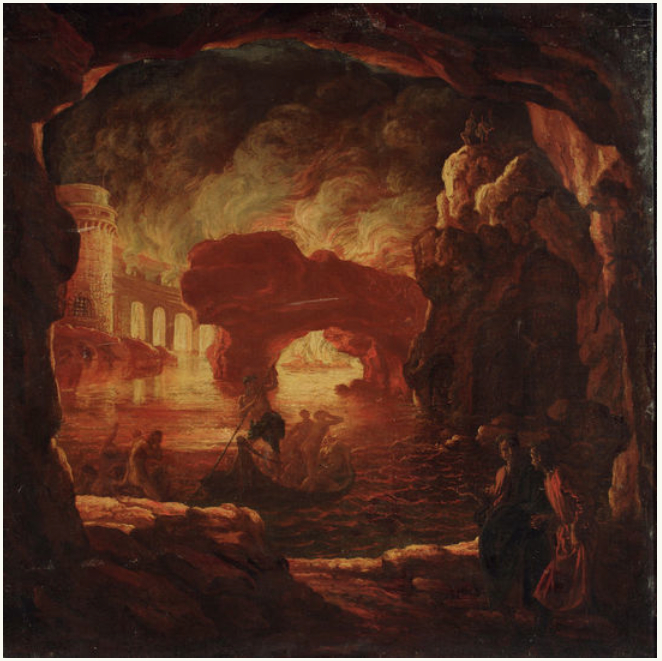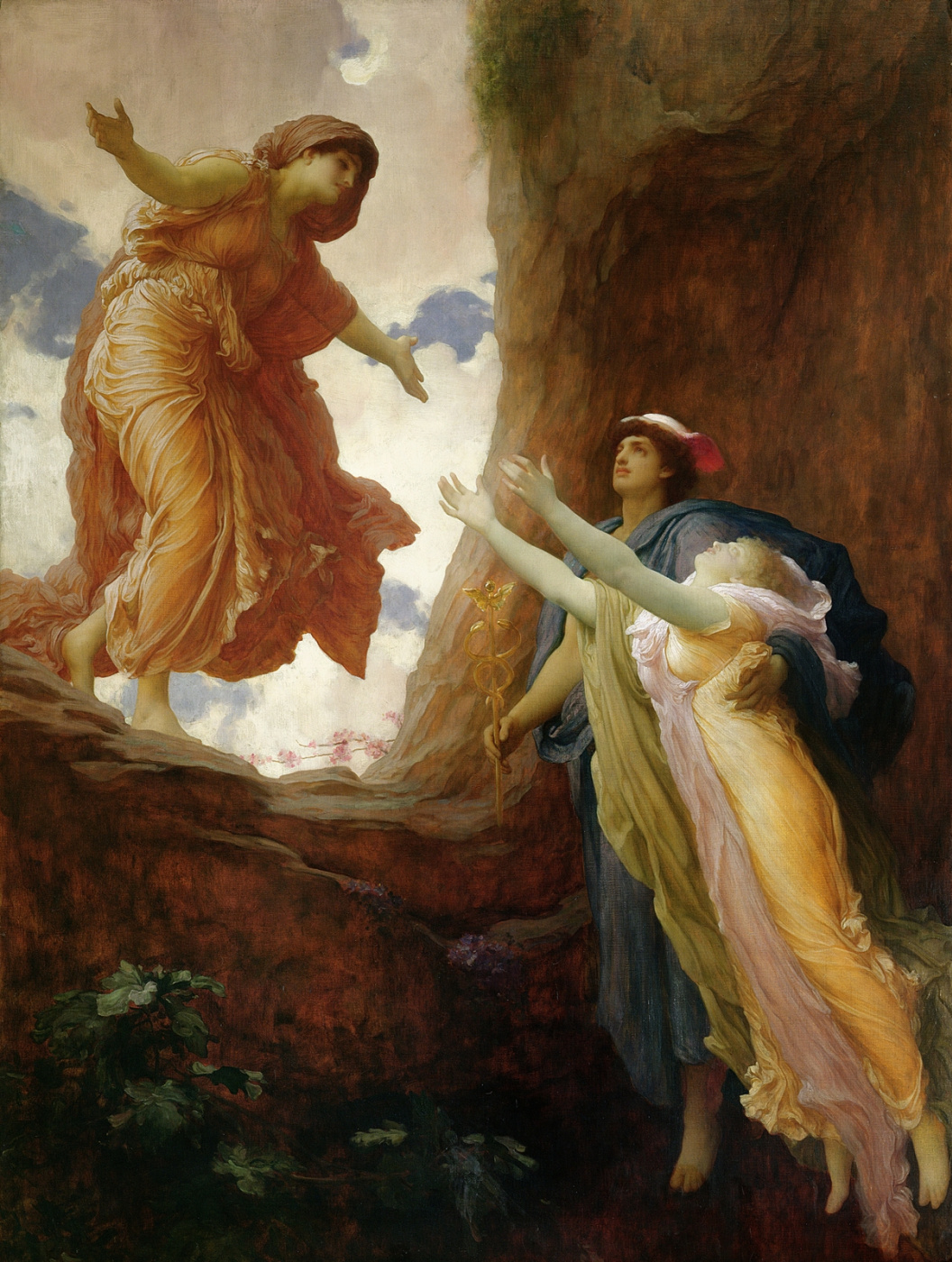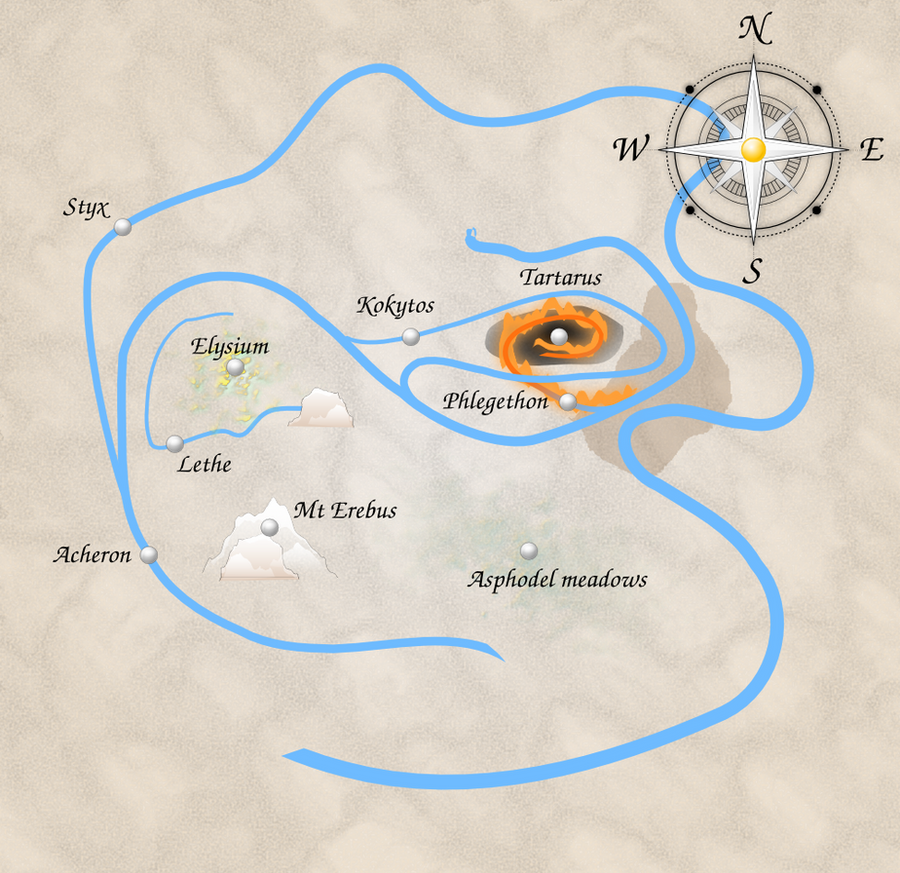Unit 2: Hades and the Underworld

Before You Read
Discuss these questions with a classmate or together as a class.
- What are traditional funeral rites in your country/culture?
- What do people in your culture believe happens after death?
- Are there ideas of “heaven” and “hell” in your country/culture? If yes, describe what these places look like and what goes on there.
- What are the purposes of these two places?
- How many seasons are there in your country? What do people believe causes the seasons to change?
- Skim the next reading. What do you think is the author’s purpose of the text: to inform, entertain, or to persuade? How will that affect the way you take notes on the reading?
Vocabulary in Context
These sentences are from the next reading. Use the context of the topic and the sentence to guess the meaning of the words in bold.
- Old Pluto (Hades) came up from a great chasm created by his chariot drawn by black horses and grabbed Proserpina, carrying her off down into his underground world to be his bride.
- The ground had shut tightly closed and the meadow looked pristine, as if nothing out of the ordinary had happened.
- No rain fell and no crops grew on the rest of the earth, and though Iris and all the gods came to beg Ceres to relent, she would grant nothing unless she had her daughter back.
- …she was only to be allowed to stay on earth on condition that she had eaten nothing while in the underworld. Pluto, knowing this, had made her eat a few pomegranate seeds, and so she could not stay with her mother; but Ceres’s tears prevailed and Jupiter made Pluto compromise…
- This is why in the spring and summertime, the earth flourishes with flowers and in the fall, crops are harvested before Ceres must deal with losing her daughter once more.
- The entrance to it was guarded by a three-headed dog, named Cerberus, and the way to it was barred by the River Styx.
Hades and the Underworld
Adapted from Aunt Charlotte’s Stories of Greek History by Charlotte M. Yonge, $\ccpd$

There is a story about Ceres (Demeter), the grave, motherly goddess of corn and all the fruits of the earth. She had one beautiful daughter named Proserpina (Persephone), who was playing with her friends, gathering flowers in the meadows, when old Pluto (Hades) came up from a great chasm created by his chariot drawn by black horses and grabbed Proserpina, carrying her off down into his underground world to be his bride. The ground had shut tightly closed and the meadow looked pristine, as if nothing out of the ordinary had happened. Poor Ceres did not know what had become of her precious daughter and wandered up and down the world looking for her, tasting no food or drink. No rain fell and no crops grew on the rest of the earth, and though Iris and all the gods came to beg Ceres to relent, she would grant nothing unless she had her daughter back.

So Jupiter sent Mercury to bring Proserpina home; but she was only to be allowed to stay on earth on condition that she had eaten nothing while in the underworld. Pluto, knowing this, had made her eat a few pomegranate seeds, and so she could not stay with her mother; but Ceres’s tears prevailed and Jupiter made Pluto compromise so that Proserpina was to spend the summer above ground and the winter below–six months–one month for each seed she consumed. This is why in the spring and summertime, the earth flourishes with flowers and in the fall, crops are harvested before Ceres must deal with losing her daughter once more. Then the land grows cold; Ceres’ tears fall as the leaves fall.

But what did Proserpina think of her new home and husband? There is one story of an underworld river nymph who adored Hades. Proserpina caught the girl staring lovingly at her husband. When she confronted the nymph, named Minthe, Minthe complained that she didn’t understand why Hades chose Proserpina over her, for she was far more beautiful than Proserpina. Minthe threatened to steal Hades from her once she goes back to the upper Earth to be with her mother. And so Proserpina decided to turn her into a plant so she could do no harm. That plant, which we call “mint,” was used often during ancient funeral rites due to its sweet smell.
She seems to have been content in her underground kingdom where she ruled with Pluto. It was supposed to be below the volcanic grounds in southern Italy, near Lake Avernus. The entrance to it was guarded by a three-headed dog, named Cerberus, and the way to it was barred by the River Styx. Every evening Mercury brought all the spirits of the people who had died during the day to the edge of the Styx, and if their funeral rites had been properly performed, and they had a little coin on the tongue to pay the fare, Charon, the ferryman, took them across; but if their corpses were in the sea, or on battlefields, unburied, the poor spirits had to float about in vain for hundreds of years, begging to be ferried over.

After they had crossed, they were judged by three judges, and if they had been bad, they were sent over the river of fire, Phlegethon, to be tortured by the three Furies, Alecto, Megara, and Tisiphone, who had snakes in their hair that they used as whips. Then they would be sent to Tartarus, the Underworld’s equivalent of hell. If they had been brave and moral souls, they would be required to drink from the Lethe River, the river of forgetfulness, and then they were allowed to live among beautiful trees and flowers in the Elysian fields, where Pluto governed. Those who were neither good nor bad stayed in the Asphodel meadows, where they would remain as bored in death as they lived. Here, too, lived the three Fates, always spinning the threads of men’s lives; Clotho held the distaff where the raw cotton stayed, Lachesis drew out the thread and measured the length of the thread and thus a human’s life, and Atropos with her scissors cut it off when the man was to die. And, though Jupiter was enormously powerful, nothing could happen but by Fate, which was stronger than him.
Vocabulary from the Stories
The following English vocabulary words come from this story. Fill in the chart with the character or place in the story the word comes from and the definition. Discuss with a partner the relationship between the word from the story and the definition.
| Character / place | vocabulary words | definition |
|
infuriate (v), furious (adj), fury (n) |
||
|
lethargic (adj), lethargy (n) |
||
| X |
lethal (adj) |
|
|
elysian (adj) |
||
|
fate (n) |
||
| X |
fatal (adj) |
|
| the Furies | fury | |
| X | furious | |
| X | infuriate | |
|
cereal(s) (n) |
||
|
mint (n) |
||
|
life cut short (phrase) |

We also get an interesting idiom from the Underworld: “sop to Cerberus.” As Hades is the land of the dead, it was difficult for the living to visit. Not only did they have to convince Charon to ferry them across the Styx River, but they had to survive the gatekeeper, Cerberus. Stories tell of advice to give a drugged cake covered in honey to Cerberus, who would then fall asleep and make it easier to get to the kingdom of Hades. Thus, “sop to Cerberus” means to bribe someone who might be troublesome or has some troublesome information. It is often used concerning politics and businesses. Can you give an example of a “sop given to Cerberus”?
Did you know?
(from Merriam-Webster.com)
“From its literal Greek roots, atrophy would mean basically ‘lack of nourishment.’ Although the English word doesn’t usually imply any lack of food, it always refers to a wasting away. Those who have been bedridden for a period of time will notice that their muscles have atrophied. And muscular atrophy is a frequent result of such diseases as cancer and AIDS. We also use atrophy in a much more general sense. After being out of work a few years, you may find your work skills have atrophied; someone who’s been living an isolated life may discover the same thing about his or her social skills, and a democracy can atrophy when its citizens cease to pay attention to how they’re being governed.”
Comprehension Questions
Using your own words, answer the questions below according to the reading. Make a note of where you found the answer in your reading.
- According to the story, why do summer and winter occur?
- Why do the gods beg Ceres to give up looking for Proserpina?
- What determines which souls can or cannot enter the underworld?
- What is the next step for souls that can enter?
- What happens to the souls that cannot enter?
- Which place seems to be analogous to “heaven”?
- Who guards the gates to the underworld?
- Who is Charon?
- Who brings souls to Charon?
Critical Thinking Questions
Answer the following questions. Compare your answers with a partner.
- Fate is an important idea throughout Greek mythology. Reread the last sentence of the reading. Why is it interesting that even Jupiter is not as strong as fate? Give one example of how fate was stronger than the gods in previous readings.
- How are ideas concerning the afterlife similar or different from your culture’s view?
- Go to the link and look at the following cartoon. What can we learn from this cartoon?
- The ancient Greeks had a spring festival celebrating Persephone’s return and the beginning of spring. Many school-aged people have a spring break. What kind of, if any, spring festival or holiday does your country have? What kinds of activities do people participate in during the spring festival?
- Why do you think the ancient Greeks created the story of Ceres and Proserpina?
- What do we learn about ancient Greek culture in the description of the Underworld? Are there any similarities in your culture concerning ideas about death?

CEFR Level: CEF Level B2


